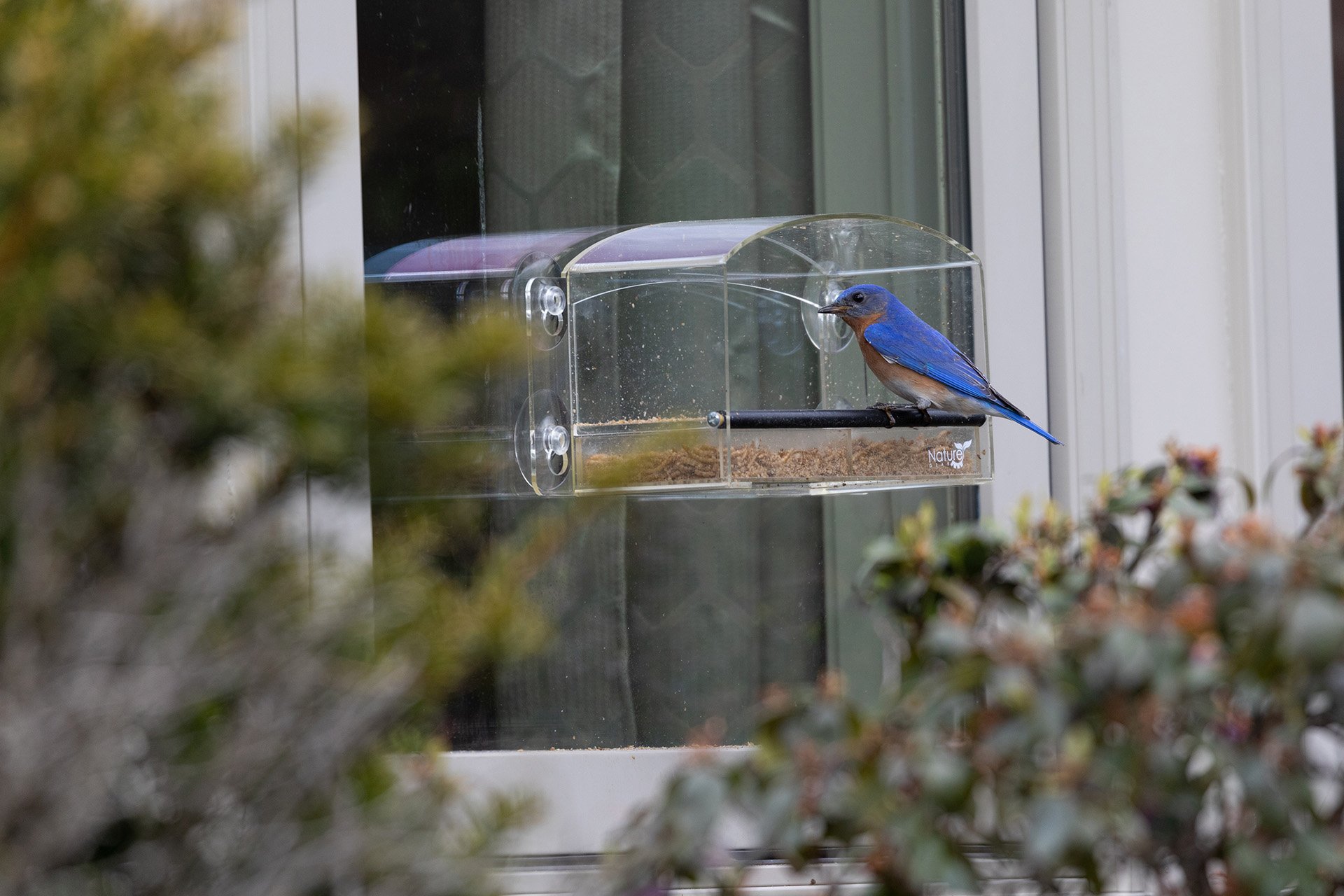Birds in Massachusetts
Where Are the Birds?
Mass Audubon often receives questions from concerned bird watchers asking, in essence: "Why are there no birds?" Where there were once a lot of birds in the yard or at feeders, now there are almost none.
Unless there has been a significant change in the immediate area of a feeder, or in the local habitat, the answer will usually be explained by population dynamics. Populations of all songbirds are subject to natural fluctuations from year to year. These are usually associated with widespread success or failure during the breeding season, which in turn is related to weather, food supply, predators, and other conditions.
Bird Populations Vary with the Seasons
Many people are under the impression that the birds they see in their yards from day to day are, like the trees and shrubs, constant elements. In fact, however, bird populations are extremely dynamic.
For instance, there are some years when most, if not all, of the summering chickadees, Blue Jays, and other "resident" birds are replaced by a different wintering population. Because individuals of a species look pretty much the same, shifts in feeding birds usually go unnoticed except when concentrations become unusually large or when the out-going visitors are not immediately replaced by a new group of hungry customers.
When struck by a worrisome disappearance of birds in the early fall, people may start searching nearby woodlots and their fears are confirmed. Where recently the woods were full of songful birds there is now a pall of silence and inactivity. This too is completely normal. Except for unusually loquacious species such as mockingbirds, bird song essentially ceases by late summer.
Because bird song is such an integral part of our outdoor experience, on a nice day in September we often fail to notice its absence unless we're listening for it. Once they have left their breeding territories, birds tend to coalesce into feeding flocks, and it is not unusual for extensive sections of the landscape to be birdless when such a flock or flocks are elsewhere. There is nothing alarming about a prolonged silence in the depths of an autumn forest.
Birds Find Food in the Wild
Wild foods include berries, weed seeds, mast (acorns and other nuts), and invertebrate sources such as lace bug larvae. These foods are subject to fluctuating availability both seasonally and from year to year. Birds will concentrate in regions where wild foods are particularly plentiful, thus leaving areas where there is less bounty.
The availability of food in the wild will affect the number of winter residents, for example, if there is a poor mast crop in Massachusetts, Blue Jays will migrate farther south to where natural foods are more abundant. When Massachusetts experiences an unusually open winter in the early part of the season, the fields remain open, and the weed seeds are available to seedeaters, especially Dark-eyed Juncos and Tree Sparrows.
Fall Weather Influences Winter Populations
Weather during the fall migration period is another factor that determines which birds will winter in Massachusetts. Some understanding of the mechanics of bird migration helps explain this relationship. Although we all recognize that the general trend of bird migration in the fall is southward, it is probably less well known that there is a significant movement of mostly immature birds that fly north in the fall.
Apparently, birds take their directional cues from the weather, and when a strong spring-like flow of warm southwest wind is the dominant weather pattern, they fly north. Most of these misguided waifs eventually move south, but if the northward movement has taken place late in the season and the internal drive to migrate has lessened, then they may spend the winter in the inhospitable northland, some to perish, some to survive. The number of Brown Thrashers and orioles, etc., that linger is almost solely dependent upon the weather influences of the late fall.
Feeder Frustrations
Many who ask "where are the birds?" have just put up their feeders for the season or for the first time ever. No flocks have descended. The feeders remain full of seed. Even the cardinals that nested in the yard haven't come. The worried birdwatcher becomes suspicious that the bird seed is at fault, undertakes a thorough cleaning of the feeders, replacing the seed or even buying brand new.
It is normal for weeks or even months to elapse before birds recognize and frequent a new feeding station. There are some considerations in the placement of a feeder which will affect the number of birds which will use it. Proximity to a sheltered staging area such as a bush provides for quick escape from predators and increases feeder visitation.
Finally, day to day visitation at a feeder may be influenced by neighborhood predators. Birds make themselves scarce when threatened by predators such as cats and hawks. It is not uncommon for a sharp-shinned hawk to frequent a feeding station while there are abundant birds there as easy prey.
This is usually a temporary situation, if the birds are scared away the hawk will soon move on to other territory. Feeding birds is an increasingly popular winter activity, therefore it is possible that there is local competition for birds at backyard bird feeding stations. We encourage people to persist in their efforts and, as always, patience will be rewarded.
Stay Connected
Don't miss a beat on all the ways you can get outdoors, celebrate nature, and get involved.



